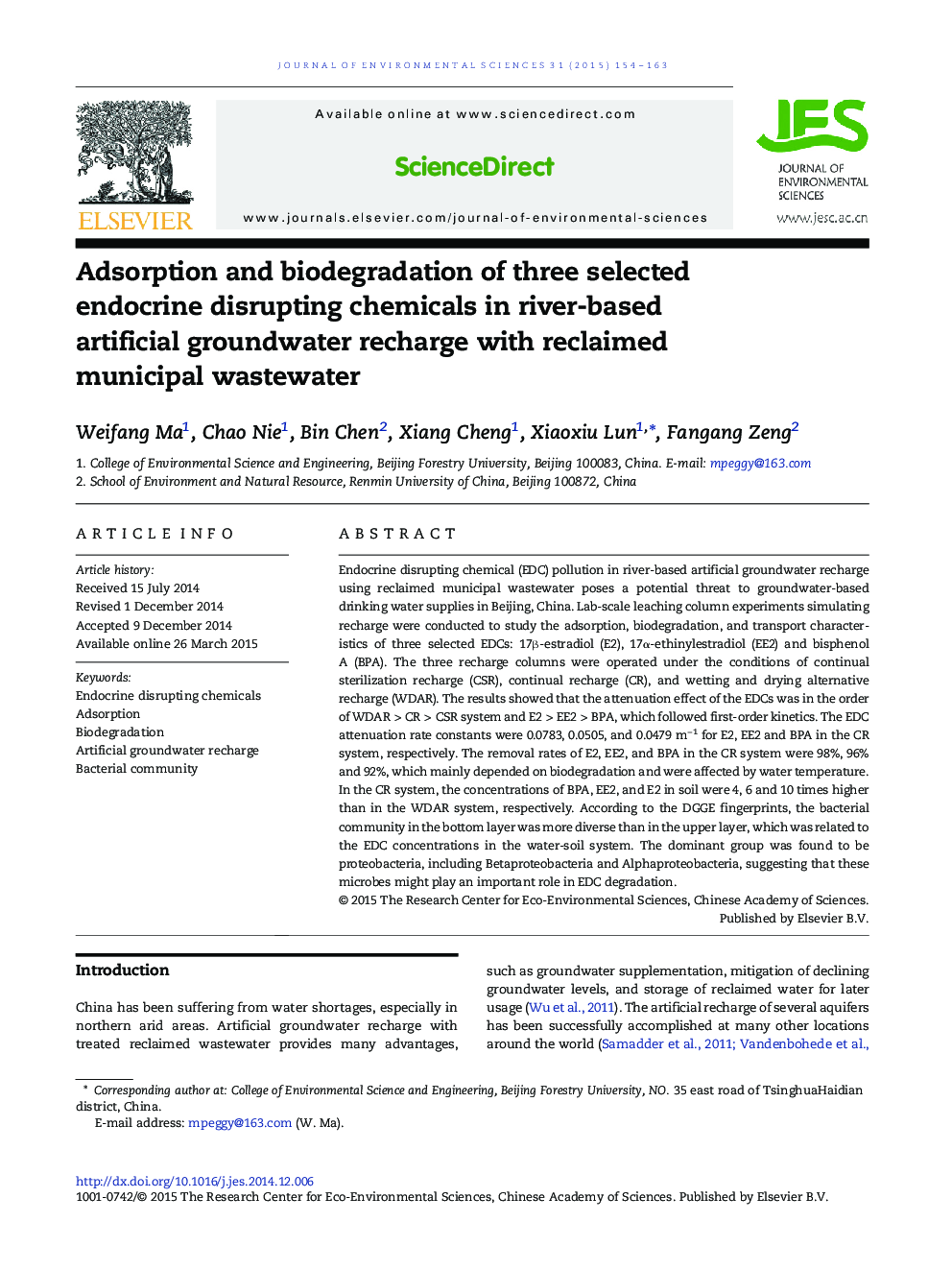| Article ID | Journal | Published Year | Pages | File Type |
|---|---|---|---|---|
| 4454084 | Journal of Environmental Sciences | 2015 | 10 Pages |
Endocrine disrupting chemical (EDC) pollution in river-based artificial groundwater recharge using reclaimed municipal wastewater poses a potential threat to groundwater-based drinking water supplies in Beijing, China. Lab-scale leaching column experiments simulating recharge were conducted to study the adsorption, biodegradation, and transport characteristics of three selected EDCs: 17β-estradiol (E2), 17α-ethinylestradiol (EE2) and bisphenol A (BPA). The three recharge columns were operated under the conditions of continual sterilization recharge (CSR), continual recharge (CR), and wetting and drying alternative recharge (WDAR). The results showed that the attenuation effect of the EDCs was in the order of WDAR > CR > CSR system and E2 > EE2 > BPA, which followed first-order kinetics. The EDC attenuation rate constants were 0.0783, 0.0505, and 0.0479 m− 1 for E2, EE2 and BPA in the CR system, respectively. The removal rates of E2, EE2, and BPA in the CR system were 98%, 96% and 92%, which mainly depended on biodegradation and were affected by water temperature. In the CR system, the concentrations of BPA, EE2, and E2 in soil were 4, 6 and 10 times higher than in the WDAR system, respectively. According to the DGGE fingerprints, the bacterial community in the bottom layer was more diverse than in the upper layer, which was related to the EDC concentrations in the water-soil system. The dominant group was found to be proteobacteria, including Betaproteobacteria and Alphaproteobacteria, suggesting that these microbes might play an important role in EDC degradation.
Graphical abstractThe average concentration of the residual EDCs in the soil column was in the same order of biodegradation capacity of E2 > EE2 > BPA. The three types of EDCs had the largest accumulation in the surface soil, and the concentration had an attenuation trend with increasing depth.Figure optionsDownload full-size imageDownload as PowerPoint slide
